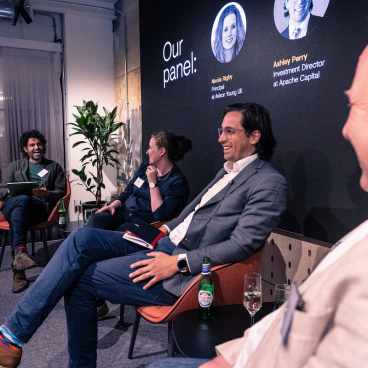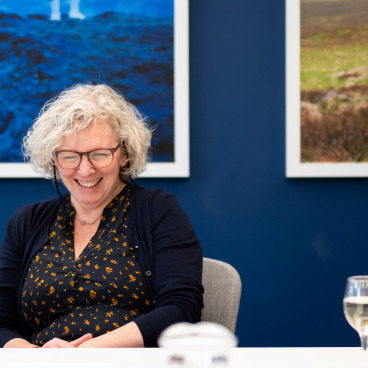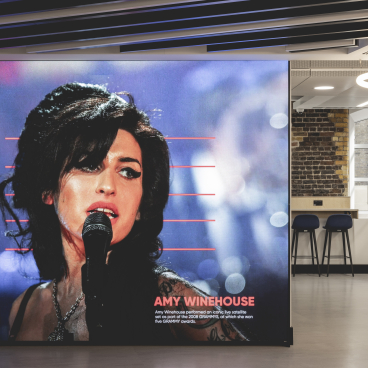Will BTR/Co living be the bedrock of Manchester’s property sector?

Credit: Tim Ainsworth
Following on from our seminar on Manchester's Property Outlook, which explored the good, the bad and the future of the city's investment potential, we honed in on the residential sector for our latest roundtable discussion.
We invited a well-placed selection of property professionals to weigh in on the topic, all with vast experience in shaping how Manchester's residents experience the place they call home. Hosted by Material Source Studio Director, David Smalley, our roundtable guests shared their views on the highs and lows of the region's current residential infrastructure, while considering what could change for a better future. Here's a flavour of how the conversation went...
Our guests

Catalina Ionita, Architect, Chapman Taylor

Jan Harmens, Director, Tsiantar Architects

Sarah Moulson, Founder + Director, White Circle

Chris Trunkfield, Senior Design Executive, Moda

Stephanie Porfyriou, Architect, Atkins

Lauren Maylor, Co-founder & Director, Project Studio

Elizabeth Bushell, Student Accommodation and Housing Manager, Forbo Flooring Systems
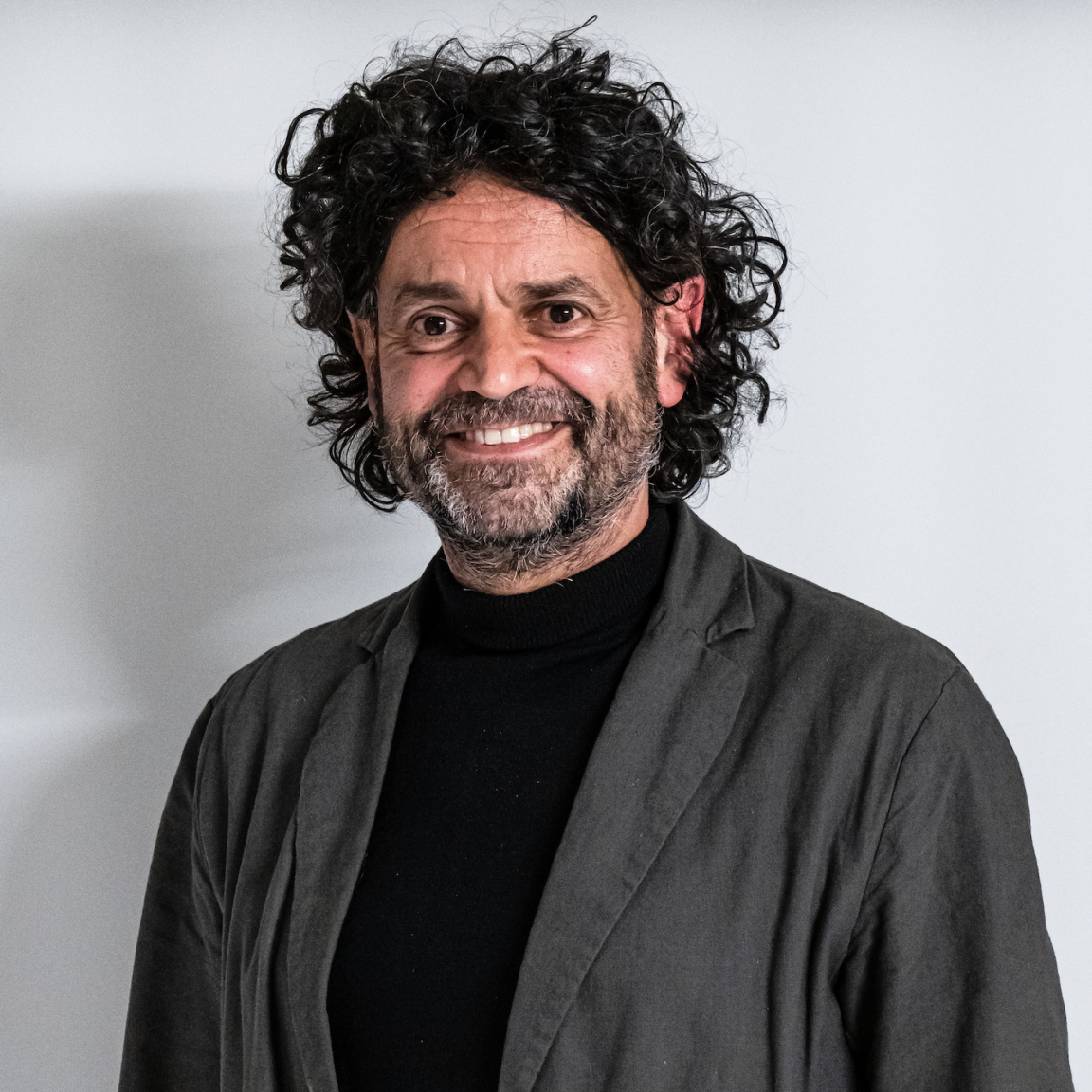
David Smalley, Director, Material Source Studio
To kick off the discussion, David asked: "What makes Manchester a successful city?"
Sarah Moulson – the founder and director of commercial design studio, White Circle, cited its ability to change. “I think Manchester has changed significantly over recent years. BTR has been a massive driver in city centre living. And the F&B offering has had to up its game because there are more people around – both in the week and at weekends. But interestingly there are certain pockets of Manchester that have taken years to get that place-making vibe within them. For example, when they first did Spinningfields, they put in lots of bars and restaurants along the river – none of which were successful, because there wasn’t that draw on the weekends; there wasn’t that community in the city centre. Whereas now you have Ancoats and you can’t move for people eating out."
Timeline-wise, BTR is a relatively new term in the property sector. David asked, when did BTR start in Manchester?
Chris Trunkfield, a senior design executive at Moda, a family-owned developer and operator of purpose-built homes for rent in the UK, has been involved since its inception. “Around 2016 – we called it PRS. When I started as an architect, I remember seeing a lot of sites for PRS that never materialised, because it was that fledging an industry. This was back in 2010 after the recession. But since then, it’s matured.”
The spark for BTR, Catalina Ionita, an architect at Chapman Taylor - a global architecture practice, believes was down to the poor conditions within the PRS. "You had private landlords renting out properties that were not suitable for renting.”
“So, this clearly signified demand?” queried David.
“It’s a change in money and what’s important to people, what they want out of life - the subscription lifestyle”, responded Chris. “You want to be mobile; you don’t want to pay a deposit or be tied down by a mortgage.”
“You want the Instagrammable lifestyle where you can play on a pink basketball court and use the spa downstairs and not have to mow the lawn and put the bins out,” added Sarah.
Lauren Maylor, co-founder and director at Project Studio – a design practice founded just last year, suggested that student accommodation has been a real catalyst in transforming the BTR sector, specifically in terms of what this demographic now expects from their dwellings. “Student accommodation used to be absolutely awful but the change over the last 10 years has driven that expectation from the younger generation coming out of university and into the real world where they expect a concierge, a cinema, private dining space and a gym.”
Student accommodation has been a catalyst in transforming the BTR sector - Lauren
There is also another factor to consider, she continues, in that, as pointed out by Shannon Conway, a BTR Developer at Glenbrook Property in a recent episode of 42 Roles In The Built Environment, some initial apartment buildings launched and didn’t sell. “So that drove the change in direction to actually renting the assets out as opposed to selling them off.”
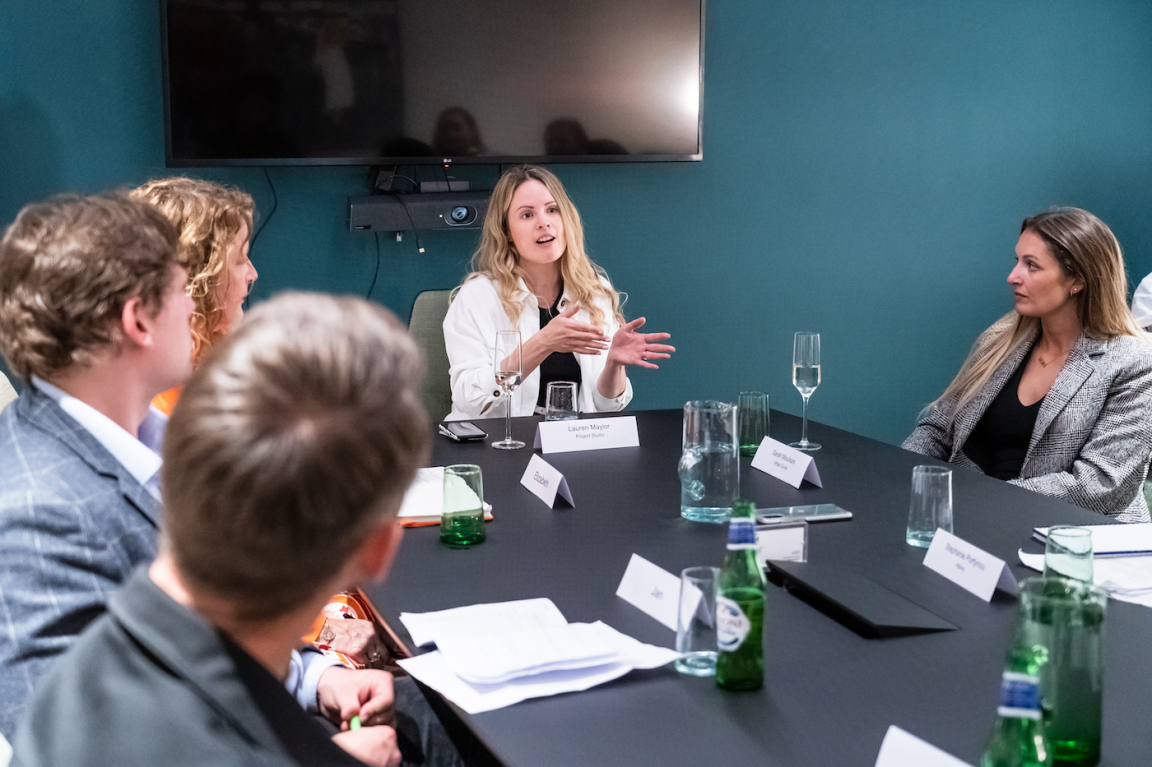
Credit: Tim Ainsworth

Credit: Tim Ainsworth
Hospitality, workplace and beyond
Moving from the many catalysts of BTR, to hospitality, David asked whether Manchester is getting this industry right?
Stephanie Porfyriou, an architect at Atkins, one of the world's most respected design, engineering, and project management consultancies, argued that better residential options have forced hospitality into upping the ante.
As we see the residential sector developing, there is more equal opportunity for hotels, retail and mixed-use offerings being developed alongside - Stephanie
Jumping from hospitality to workplace, David reemphasised a topic discussed at the previous night’s seminar: “Post-Covid, everyone was worried that people wouldn’t come back to work. What is your view of workplace now?”
Stephanie responded that it’s change that we’ve seen as opposed to decline. “The Workplace sector in Manchester has changed, but it hasn’t stopped growing. Start-ups and business HQs are still re-locating to the city centre to attract local talent (graduates and young professionals etc).”
Sarah agreed, adding that expectations have altered: “Just as we were talking about people’s expectations of life, living in a BTR environment, and wanting all of those amenities, they are demanding the same from their workplace. They might not have as many people coming in on every working day but the workplace still needs to be dynamic, adaptable and provide flexible working and collaboration spaces.
We need the same floor plate for less people on a more flexible basis in a better environment - Sarah
Flexibility was also mentioned by Chris with regards to the workplace: “The brief is changing for workplace, priorities have shifted. Pre-Covid, it was all about large floor plates – 18 metre spans – with lots of desks. Particularly with embodied carbon, you can accept smaller spans, cellular offices, flexibility so the offices can still divide and adapt year-by-year with the changing market. There are also amenities to consider around health and wellbeing, and biophilia.”
“Looking more broadly, is everyone’s gut feeling that there are more people now coming into Manchester than there was at the end of Covid?” asked David.
“Yes” – was the resounding response. Although not full-time, everyone around the table agreed that their own teams wanted to be in a physical office amongst their peers, and this was helping to retain a strong workplace culture.
Having launched her business 18 months ago, Lauren has seen this impact from the start: “Most of the team prefer to be in the office, and we’ve moved into quite a small studio, so we try to make the environment really nice – really good coffee and biscuits. The majority of the team are in their 20s and have decided to move from out of the city, in. They can see the draw of Ancoats with its bars and sense of community and belonging. Sometimes it’s hard to get them to leave the office and go home!”
Back to BTR
And going full circle, the impact of Covid-enforced hybrid working has also had a knock-on effect in the way that BTR developments are designed.
Chris commented: “Going back to BTR, we used to put in so much coworking space, and we’ve been monitoring that across all the sites through sensors that count people coming in and out. Based on this we’re adapting the amenities we provide – coworking has become a huge priority. And it’s not just about creating a large space with several desks. Our residents aren’t working from home in their apartments, they still want to be part of a community. And they want separation between home and work.”
Continuing on the topic of BTR, David asked, “what else has changed?"
“We’re seeing things like padel courts being something we’ve put into some of our schemes, as well as dog grooming, treatment and recharge / spa rooms – all with an emphasis on health and wellbeing”, responded Catalina.
To me BTR is when you have one single point of connection for everything – it provides a good customer experience” – Catalina
Speaking on the topic of experience, technology was highlighted as a key enabler, particularly in high-end residential projects. Chris discussed a research project in the works with Cambridge University looking at digital twins for shaping how a building works based on user data. “People want to have complete control over their environments."
“With BTR seemingly on an unwavering rise, is there any signs of it levelling out?” asked David.
“When the primary land runs out”, replied Jan Harmens, director at Cheshire-based Tsiantar Architects.
Chris added: “But the future of the construction industry relies on existing buildings anyway, we need to retrofit.”
Sarah believes that wider societal trends have normalised BTR, cementing its place within the property sector: “Considering the cost of maintaining a house and interest rates etc, the younger generation don’t have money to invest for a house deposit. Their mortgage repayments might cost the same as rent. There’s been a mindset shift in Europe and the USA to people not owning houses – it’s normal to rent. And with the creation of such amazing facilities, why wouldn’t they want to?”
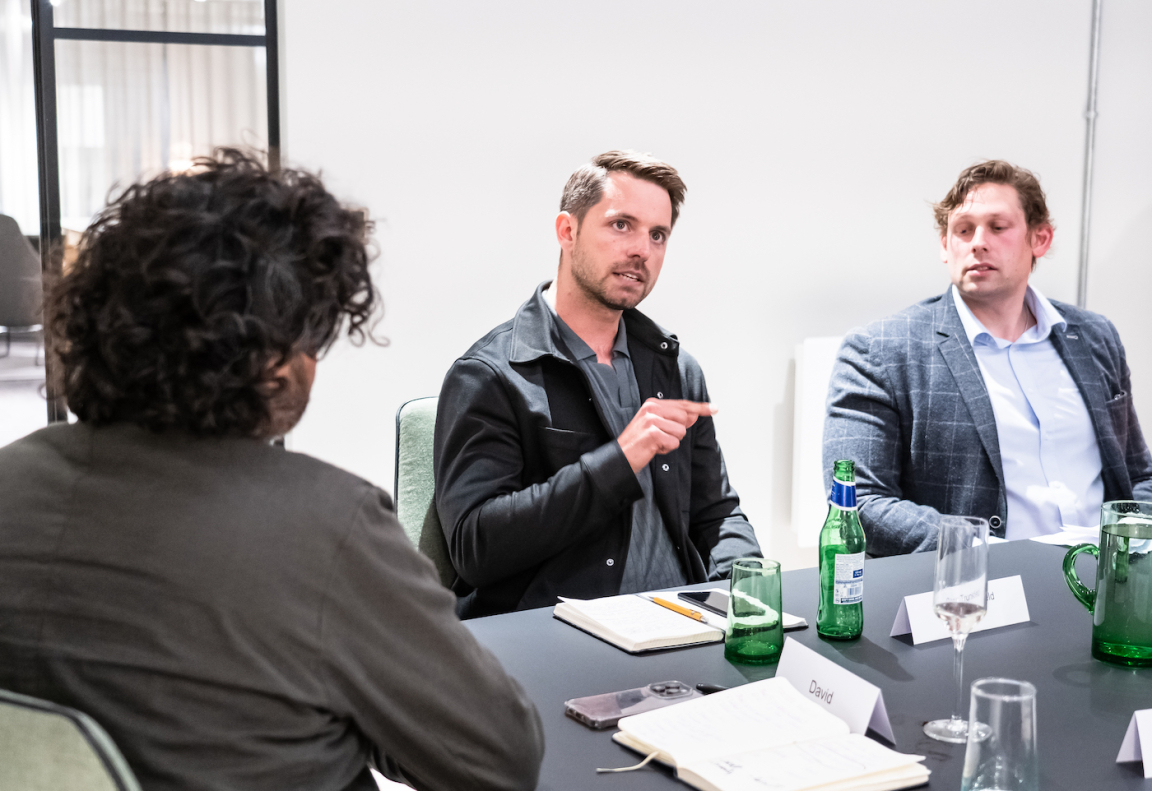
Credit: Tim Ainsworth
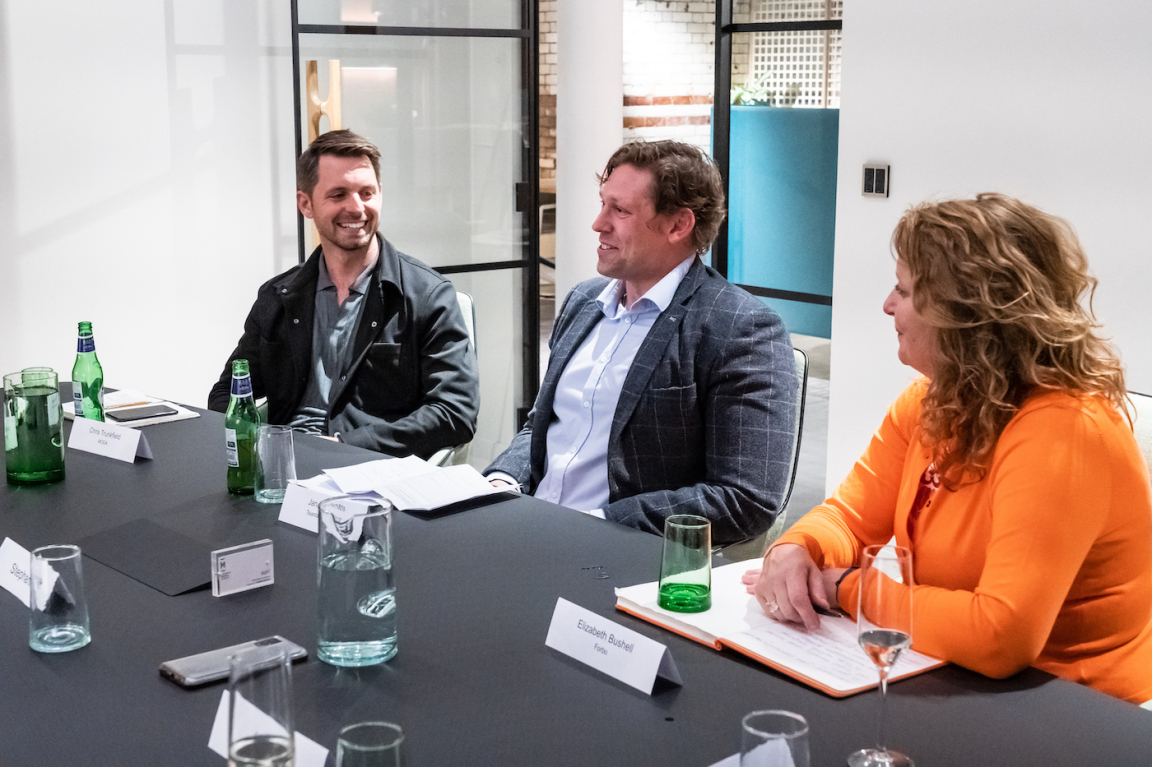
Credit: Tim Ainsworth
Exploring urban sprawl
David extends the perimeters of the conversation to include suburban built to rent (SBTR) and co-living.
“Suburban build to rent focuses on houses and the key here is to create really amazing outdoor amenities for customers”, explained Catalina, who has experience in this segment.
Co-Living and ‘micro units’ with shared laundrettes and outside kitchens are also said to be emerging.
“Sharing amenities means people have to go out and explore”, continued Catalina.
The important phrase is long term custodian. You have a longterm custodian that has responsibility of that site and that community. If they fail in that, people will leave – Chris
Focusing on Manchester's geography, David asked: “Is the city stretching?”
Stephanie replied: “Stockport and Trafford could really benefit from investment. They are very close to the city centre. A classic example is the Stockport Interchange with transport to Greater Manchester – it’s a BTR unit on top of the bus station. You get cheaper rent, you’re closer to the city centre, you have access to green spaces outside of the city with a quieter, smaller community feel.”
“We need to focus on local residents, affordability and not displacing people from the community that’s there already. The way to do that is lots of consultation.” Agreed Sarah.
The group discussed the evolution of areas in Manchester such as Ancoats - which came up many times - as those which have changed beyond recognition in recent years. While this and the Northern Quarter of Manchester are getting it right, Piccadilly Gardens was highlighted as being less successful…
“You can only create those environments if people use them in the right way”, commented Sarah, “It’s how do you change the dynamic of the city and the people that are using it to try and instil a sense of community because the people that are in that area are not using it as intended.”
Catalina brought in ESG: “It’s the social aspect behind a city, if you want to design socially inclusive cities, you need to think about the ‘S’ in ESG. It’s the year of the ‘S’.
“But we need to address the main issues there. There is a huge homelessness problem in Manchester – big social issues that you cannot fix with a brand-new piece of architecture.”
“Manchester is a cultural place. I think the people of Manchester have got a strong hold of Manchester, they feel committed to being here and passionate about their city. They love the underdog, like independents where you can get a good coffee. People want that sense of community and buy into it”, continued Sarah.
This plays into the work that Moda does, explained Chris: “When it comes to the commercial units under our buildings we are very selective about which businesses we allow in, because it ties back into the local community.”
“What areas are getting it right in Manchester?” asked David.
“Mayfield is a welcome and needed addition to the city – it’s shocking how little green space we have. There are next to no trees in Deansgate – in 1.6kilometres there are 6 trees”, highlighted Catalina.
Community fuel or fail?
Throwing a question back around the table, Jan raised an interesting point: ”Is the BTR model actually sucking communities out of the city?”
Sarah believes that “the current economic crisis we are in is pushing more people to BTR. This is changing the demographic that are going for it to include young families and retired people too.”
Jan argued that the current pressure being put on private landlords is “unrealistic”.
Though Sarah replied that “people need choice – not everyone wants to live in an apartment block that looks like an airport” – suggesting there is a place for all segments within the residential sector – new and old.
Jan agreed: “People might not live in these places their whole lives, it could just be for a year or two. There needs to be balance.
The residential market is a rich tapestry – Jan

Credit: Tim Ainsworth

Credit: Tim Ainsworth
Looking ahead
To round off the conversation, David asked everyone around the table a simple question to ponder for the future: “What are the key success factors to consider for this region in the world of residential?”
“Understanding retrofit and making it applicable to the private market”, answered Jan.
Catalina believes the customer is king: “Understanding the customer. Change is good and gives opportunity for improvement and growth, so be more in tune with your customers’ behaviour.”
Chris focused on community: “Healthy sustainable communities.”
Sarah highlighted city spread: “Integration of outer suburbs through transport links.”
Stephanie looked to longevity: “A focus on longevity and quality of design.”
And Lauren cited future-proof-friendly flexibility. “Adaptable design which retains communities, as this impacts the success of an area. We need to make sure buildings are still shiny in years to come.”
Top takeaways
BTR is here to stay - it presents an appealing residential solution for many people, particularly the younger generation
Consumer demand is pushing the BTR market to design in better amenities for residents - this stems from students having higher expectations of their surroundings
The workplace still has great relevance within Manchester - people want to go to an office to be amongst colleagues - if not all the time, then some of it
BTR is being adapted and rolled out to suburban areas, with emphasis on offering green space - this is the key to Manchester's continued growth as a city
Community is king and must be protected and encouraged
Our thanks go to all our roundtable guests, and our partners and supporters for the evening, Forbo.
All image credits: Tim Ainsworth




